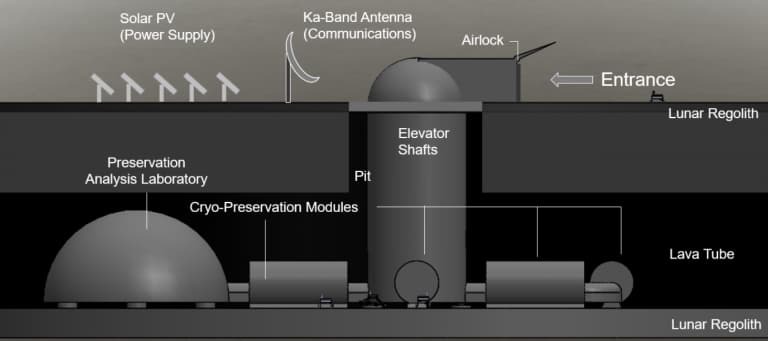A Researcher Wants To Create A Lunar Ark To Preserve Life On Earth
A researcher from the University of Arizona named Jekan Thanga has proposed an ambitious project that aims to preserve much of life on earth using a solar-powered lunar ark. The researcher describes it as a modern global insurance policy in the event of a global crisis. Thanga got his inspiration from the biblical tale of Noah's Ark. Rather than saving a pair of every animal species; it would store cryogenically frozen seed, spore, sperm, and material from 6.7 million species on earth. The lunar ark would be solar-powered.
Thanga and a team of undergraduate and graduate students have outlined the concept described as a "modern global insurance policy" in a recent paper. The researchers say that Earth is a volatile environment noting that humans had a close call about 75,000 years ago with the Toba supervolcanic corruption that caused a 1000-year cooling period and is believed to correspond with a drop in human diversity.
Another fear is that as the climate warms, sea levels might rise to cover many currently dry locations, including a structure in Norway that holds hundreds of thousands of seed samples called the Svalbard Seedbank. That structure was created to protect against any accidental loss of biodiversity.

Thanga and his team believe that storing samples on the moon reduces the risk of biodiversity being lost if an event was to cause the total annihilation of Earth. A network of about 200 lava tubes exists right beneath the moon's surface that were discovered in 2013. While the moon's frigid temperatures make it a difficult place for humans to live, it would be a perfect place for storing samples that need to stay very cold and undisturbed.
Thanga believes that transporting about 50 samples from each of the 6.7 million species would require about 250 rocket launches. The design of the ark would also rely on extreme temperatures using quantum levitation. Researchers admit there is a lot more work to be done on how to build and operate the ark and how the materials stored might be impacted by the lack of gravity.
